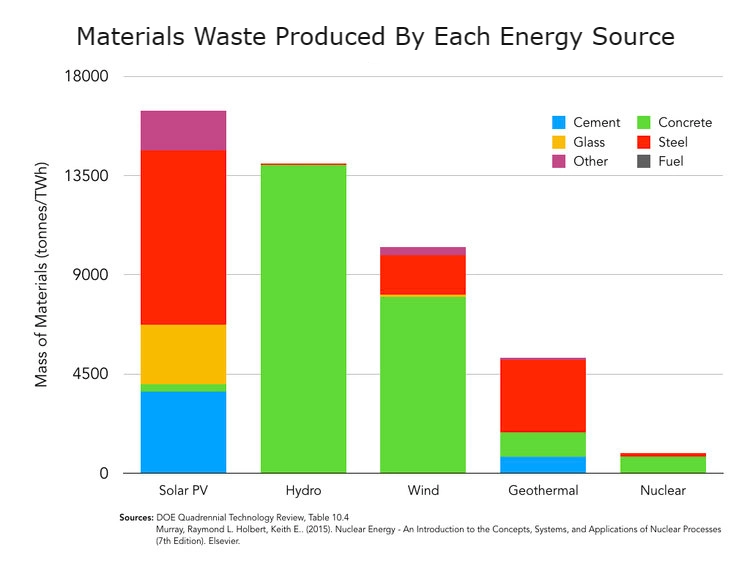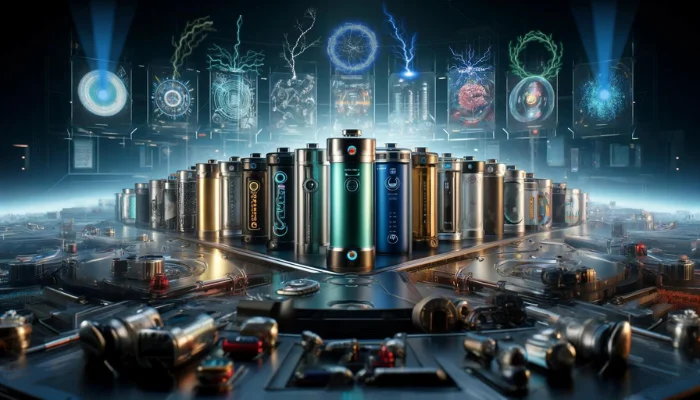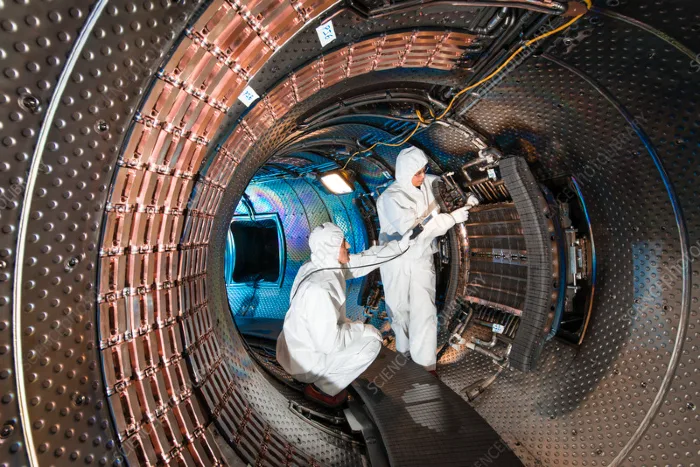I used to be really worried that global warming might ruin the natural places that people had worked really hard to safeguard. Year after year I found myself stressing over very large issues like the damage being done to the rainforests by massive corporations.
I believed the answers were straightforward – like putting solar panels on every roof and driving electric cars – and that the main challenges were in politics.
I was wrong. It’s just not that simple!
Between 2009 and 2015, the US spent a huge amount of money, 150 billion dollars, on things like renewable energy and other clean technologies. But soon, we hit some obstacles.
First off, the electricity made by solar panels on rooftops turns out to be about twice as expensive as electricity from big solar farms. Both these types of farms need a lot of land covered with solar panels or wind turbines, and big power lines to carry the electricity from the countryside to the cities.
But many local communities weren’t too thrilled about this, and neither were conservation biologists – they were worried about how these changes might affect wild birds and other animals. There were many other people working on solutions too.
One big problem with solar and wind power is that they don’t work all the time. They only make electricity for about 10 to 30 percent of the year.
But some folks came up with ideas.
They wanted to turn big hydroelectric dams into huge batteries.
Here’s the plan: when the sun is shining and the wind is blowing, they’d use the extra energy to pump water uphill and store it.
Then, when we need electricity, they’d let the water flow downhill through turbines to create power. It’s like using water as a backup battery. Some people didn’t think this idea would hurt wildlife too much.

When I heard that house cats were responsible for billions of bird deaths each year, it changed my perspective on the hundreds of thousands of birds that wind turbines cause.
It seemed back then that using technology could solve most, if not all, the problems that come with using more solar and wind power. But as time went on, these problems didn’t really go away and, in some cases, they got worse.
Take California. The state is really serious about using renewable energy, but they haven’t changed a lot of their hydroelectric dams into big batteries yet.
Part of this is because of where the dams are located – it needs a very specific type of place to do this, and changing them can be really expensive.
Of course, there are water issues to consider as well.
Water has other important uses like helping crops grow, and the water in our rivers and lakes is getting scarcer and less predictable because of climate change.
Sometimes we even have too much solar power, and we have to stop it from coming into our cities.
We’ve had to pay other states to take it or risk causing problems in our power grid.
Back to the whole cat perspective thing… It’s interesting to learn that what cats and wind turbines do to birds is different. Cats catch smaller birds like sparrows and robins.
These birds are not in danger of disappearing.
But big birds like eagles, kites, and owls, which are more at risk, can get killed by wind turbines. Wind turbines have actually become one of the biggest dangers to these large bird species. And it turns out that when it comes to birds and cats – cats don’t kill eagles; eagles kill cats.
In recent years, we’ve introduced a lot of wind turbines into the sky, and that’s why these bird-turbine collisions are happening more often now.
What About Solar Energy?

Now, let’s talk about something else – solar energy. It might seem like a great idea to have solar panels on every roof and get our electricity from the sun. But building large solar farms, like one in California called Ivanpah, comes with problems.
To make space for these solar panels, they had to remove all the animals and plants from that area.
For example, desert tortoises lived there. The builders had to take them and their babies out of their homes and move them to another place. Sadly, many of these tortoises didn’t survive the move. And that’s not the only issue.
About 6,000 birds die every year around this solar farm. They literally catch fire while flying over it and fall from the sky, flaming. It’s not a good situation for the animals.
As I learned more, I realized that using the power of the sun and wind has other problems too.
You see, the sun doesn’t shine brightly all the time, and the wind doesn’t blow strongly all the time, making them both unreliable sources of energy. This means that even if we have solar panels and wind turbines, we might not always have electricity when we need it the most.
Now, using these kinds of energy sources also costs money. Even though the prices of solar panels and wind turbines have gone down, using them in our power system can be tricky.
Just take, for instance, what’s happened in California. At the period in which solar panels have come down in price very significantly, same with wind, the entire state has seen their electricity prices go up five times more than the rest of the country. And that’s not unique!
In fact, the same phenomenon happened in Germany, which is really the world’s leader in solar, wind and other renewable technologies.
Their prices increased 50% during their big renewable-energy push.
At this point, you’re probably thinking, ‘well, dealing with climate change is just going to require that we all pay more for energy’. I get it – that’s exactly what I used to think!
But consider the case of France.
France actually gets twice as much of its electricity from clean zero-emission sources than Germany does, and yet France pays almost half as much for its electricity.
How can that be? You might have already anticipated the answer.
France gets most of its electricity from nuclear power, about 75% in total. And nuclear just ends up being a lot more reliable, generating power 24 hours a day, seven days a week, for about 90% of the year.
We see this phenomenon show up at a global level.
There’s been a natural experiment over the last 40+ years in the deployment of nuclear and the deployment of solar. The results were inarguable.
For a higher cost, regions got less than half as much electricity from solar and wind than they did from nuclear.
To explain it another way… Had Germany spent 580 billion dollars on nuclear instead of renewables, it would already be getting 100% of its electricity from clean energy sources, and all of its transportation energy and Germans would see their monthly energy bills cut in half.

Is Nuclear Power Safe and Clean? Isn't It Scary?
You might be wondering if nuclear power is safe and if it’s a good idea for the environment. Well, these are important questions, and scientists have studied them for over 40 years. The latest study, from a respected medical journal called The Lancet, found that nuclear power is actually the safest.
Why is that? Let’s break it down. Every year, about 7 million people die due to air pollution.
Nuclear power plants don’t release harmful pollutants into the air, so they don’t contribute to these deaths.
A climate scientist named James Hansen even calculated that nuclear power has saved nearly two million lives so far.
Surprisingly, nuclear power is even safer than wind energy. Look at this picture of two workers in the Netherlands. Both men, ages 19 and 21, hugged in their final moment before death.

Nuclear Power and the Environment
Now, let’s talk about how nuclear power impacts the environment. Nuclear plants use uranium fuel, which is super energy-dense. A small amount of uranium can produce all the energy you’ll need for your whole life. This means you don’t need a lot of land to generate a lot of electricity.
For comparison, consider the Ivanpah solar farm and Diablo Canyon nuclear plant in California.
To produce the same amount of electricity as Diablo Canyon, you would need 450 times more land with solar panels. You’d need 17 more solar farms like Ivanpah, and they wouldn’t provide consistent power, and it would cost nearly 8 times more than the nuclear plant option, not including the cost to purchase the land.
Waste and Environmental Impact
People also worry about nuclear waste. But it’s interesting to note that solar panels actually use 17 times more materials than nuclear plants. This includes things like cement, glass, and steel.
Solar panels create 300 times more toxic waste per unit of energy than do nuclear power plants.

Nuclear isn’t so scary now, is it?
And guess what?
All the waste from Switzerland’s nuclear program can fit in a single small closet.
Nuclear waste is controlled and managed, which is not the case with other ways of making electricity. For example, other methods release waste into the environment, either as pollution or material waste.
We tend to think of solar panels as clean, but the truth is that there is no plan to deal with solar panels at the end of their 20 or 25-year life.
A lot of experts are actually very concerned that solar panels are just going to be shipped to poor countries in Africa or Asia, with the rest of our electronic-waste stream, to be disassembled, often exposing people to really high level of toxic elements, including lead, cadmium and chromium, elements that because they’re elements, their toxicity never declines over time.
I think we have an intuitive sense that nuclear is a really powerful strong energy source and that sunlight is really dilute and diffuse and weak, which is why you have to spread solar collectors or wind collectors over such a large amount of land.
Maybe that’s why nobody was surprised when in the recent science-fiction remake of Blade Runner, the film opens with a very dark dystopian scene where California’s deserts have been entirely paved with solar farms.
All of which, I think, raises a really uncomfortable question: In the effort to try to save the climate, are we destroying the environment?
The interesting thing is that over the last several hundred years, human beings have actually been trying to move away from what you would consider matter-dense fuels towards energy-dense ones. Primarily from wood and dung towards coal, oil, natural gas, and uranium.
This is a phenomenon that’s been going on for a long time. The poorest nations are still in the process of moving away from wood and dung as primary energies. And for the most part, it’s a positive change – it’s progress.
As you stop using wood as your major source of fuel, it allows the forests to grow back and the wildlife to return.
As you stop burning wood in your home, you no longer need to breathe that toxic smoke.
And as you go from coal to natural gas and uranium as your main sources of energy, it holds out the possibility of basically eliminating air pollution altogether.
Nuclear Is Unpopular (and Misunderstood)
There’s just this problem with nuclear – while it’s popular to move from dirtier to cleaner energy sources and from energy-diffuse to energy-dense sources, nuclear is simply unpopular, and the reasons are primarily historical along with a some strong greenwashing by renewable companies seeking to land massive government contracts.
Unfortunately, as a consequence, in the past, I and a lot of others have assumed (because we’ve been told this by politicians, media, and lobbying paid by companies) that in order to deal with climate change, we’re going to need all the different kinds of clean energy that we have. We were taught that the solution was a complicated, all-hands-on-deck situation.
Turns out, that’s not true. Not even slightly true, in fact.
Let’s circle back to France real quick. France gets most of its electricity from nuclear. If France were to try to significantly scale up solar and wind, it would also have to significantly reduce how much electricity it gets from nuclear. That’s because in order to handle the huge variability of solar and wind on the grid, they would need to burn more natural gas.
Think of it this way, it’s just really hard to ramp up and down a nuclear plant, whereas I think we’re all pretty familiar with turning natural gas up and down on our stove.
A similar process works in managing the grid.
Of course, it goes without saying that oil and gas companies understand this pretty well, which is why we’ve seen them invest millions of dollars in recent years in promoting solar and wind.
In reality, for regions that are currently using a lot of nuclear (half of their grids that are mostly nuclear and hydro) to expand into solar and wind and other renewables would actually increase carbon emissions – pretty significantly, in fact.
So what should we do? The best alternative, in my opinion, is to tell the truth!
That’s what a number of scientists have been doing.
I mentioned earlier that hundreds of thousands of birds are killed every year by wind turbines; what I didn’t mention is that a million bats, at a minimum, are killed every year by wind.
Consequently, bat scientists have been speaking out about this (rightfully so).
One migratory bat species in particular, the hoary bat, is very much at risk of going extinct right in the next few years because of the significant expansion of wind. It’s not just wind, it’s also on solar.
More To Discover
- The Groundbreaking Shutdown of the Original Nuclear Reactor Will Unlock More Future Fusion Insights
- Chinese-Made Offshore Wind Energy Farms Are A Dual Threat
- California’s Solar Sector Faces Steep Challenges: Lessons from a Shifting Market Landscape
- Are Crab Shells The Unexpected Key to Renewable Energy? Researchers Explore Innovative Battery Technology
The scientists who were involved in creating the Ivanpah solar farm, who were involved in clearing that land, have also been speaking out.
One of them wrote, “Everybody knows that translocation of desert tortoises doesn’t work. When you’re walking in front of a bulldozer, crying and moving animals and cacti out of the way, it’s hard to think that the project is a good idea.”
And now we can see these phenomena at work at an international level.
California has actually been shoving tons of natural gas into the side of a mountain in order to handle all that intermittent solar and wind energy.
It sprung a leak.
It was equivalent to putting 500,000 cars on the road at the same time.
And in Germany, protesters are trying to block a new coal mining project that would involve destroying the ancient Hambacher Forest in order to get to the coal underneath, all in an effort to phase out nuclear energy and expand solar and wind.
Who wins? The solar and wind companies and the lobbyists they’re paying and the politicians that get funding and votes by greenwashing their own constitutes.
Who loses? Everyone else, including the wildlife.
The good news is that some countries are still paying attention to the real facts and hard data.
The Netherlands is one of the first countries in recent memory to actually announce that they’re going to increase their reliance on nuclear power because they can’t generate significant amounts of dependable energy from solar and wind to meet their climate and environmental targets while lowering the cost for their people.
Caring about these issues is great, I do, and that’s why I changed my mind.
Hopefully, as the facts have come in, many more will begin to question their prior beliefs and change their minds.
So, at this point, the true question now is, “Now that we know that renewables can’t save the planet, are we going to keep letting them destroy it?”


















